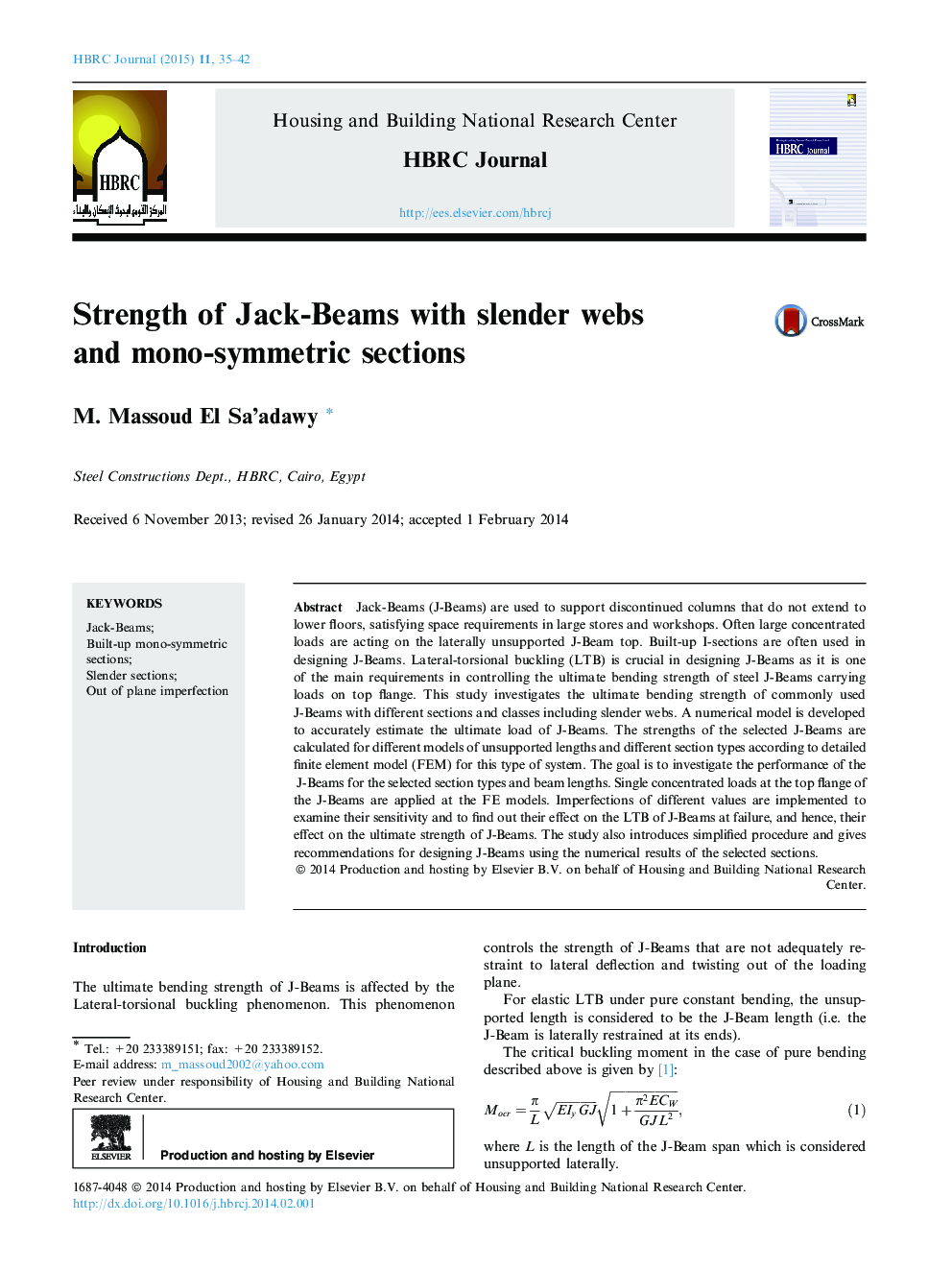| Article ID | Journal | Published Year | Pages | File Type |
|---|---|---|---|---|
| 274639 | HBRC Journal | 2015 | 8 Pages |
Jack-Beams (J-Beams) are used to support discontinued columns that do not extend to lower floors, satisfying space requirements in large stores and workshops. Often large concentrated loads are acting on the laterally unsupported J-Beam top. Built-up I-sections are often used in designing J-Beams. Lateral-torsional buckling (LTB) is crucial in designing J-Beams as it is one of the main requirements in controlling the ultimate bending strength of steel J-Beams carrying loads on top flange. This study investigates the ultimate bending strength of commonly used J-Beams with different sections and classes including slender webs. A numerical model is developed to accurately estimate the ultimate load of J-Beams. The strengths of the selected J-Beams are calculated for different models of unsupported lengths and different section types according to detailed finite element model (FEM) for this type of system. The goal is to investigate the performance of the J-Beams for the selected section types and beam lengths. Single concentrated loads at the top flange of the J-Beams are applied at the FE models. Imperfections of different values are implemented to examine their sensitivity and to find out their effect on the LTB of J-Beams at failure, and hence, their effect on the ultimate strength of J-Beams. The study also introduces simplified procedure and gives recommendations for designing J-Beams using the numerical results of the selected sections.
